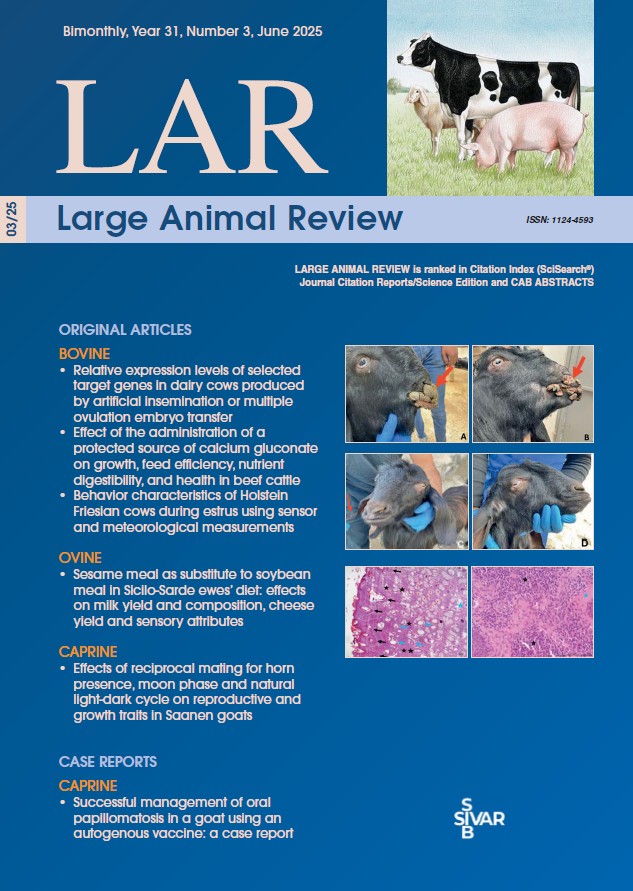Successful Management of Oral Papillomatosis in a Goat Using an Autogenous Vaccine: A Case Report
Abstract
Caprine papillomatosis is a contagious disease caused by caprine papillomavirus (CPV), characterized by benign tumors or warts primarily affecting the mouth, lips, udder, head, and neck, especially in young animals. Transmission occurs through skin disruptions, with more severe manifestations observed in immunocompromised animals. This case report presents the successful treatment of a case of papillomatosis in a goat using an autogenous vaccine. In this case report, a 9-month-old male crossbred goat with papillomas of varying sizes around the mouth, as well as on the abdomen, caudal region of the scapula, right and left sides of the anus, ear, and scrotum was described. It was determined that vital signs and complete blood count (CBC) analysis results were unremarkable. Therefore, a biopsy was recommended for further analysis. Therefore, for diagnostic purposes, biopsies were obtained from papilloma lesions and examined histopathologically, revealing significant epidermal hyperkeratosis, papillary projections, and intense inflammatory cell infiltration. Histopathological examination of the sample confirmed the presence of papilloma tissue. The biopsy was taken from the relevant papilloma in the same animal, and an autogenous vaccine was prepared. The autogenous vaccine was prepared from the patient's papillomatous tissue (approximately the size of a chickpea), inactivated with formaldehyde, and filtered with the addition of antibiotics. After sterility control, it was stored at +4°C for use. The vaccine was administered subcutaneously (SC) at a dose of 5 ml once a week for 4 weeks. During the 4-week autogenous vaccination treatment period, papillomas began to regress and heal by the second week. Approximately half of the papillomas had healed by the third week, and they were completely healed and had clinically disappeared by the seventh week follow-up. No adverse effects were observed during the treatment process, and no recurrence was detected during the post-treatment follow-up. Autogenous vaccination may be a good alternative for treating papillomas, which are rarely reported in goats, as it is inexpensive, easily available, effective, and provides a complete cure. It also provides a practical treatment option for cases in which surgical removal of papillomas is not feasible due to the risks associated with their distribution and anatomical location.


